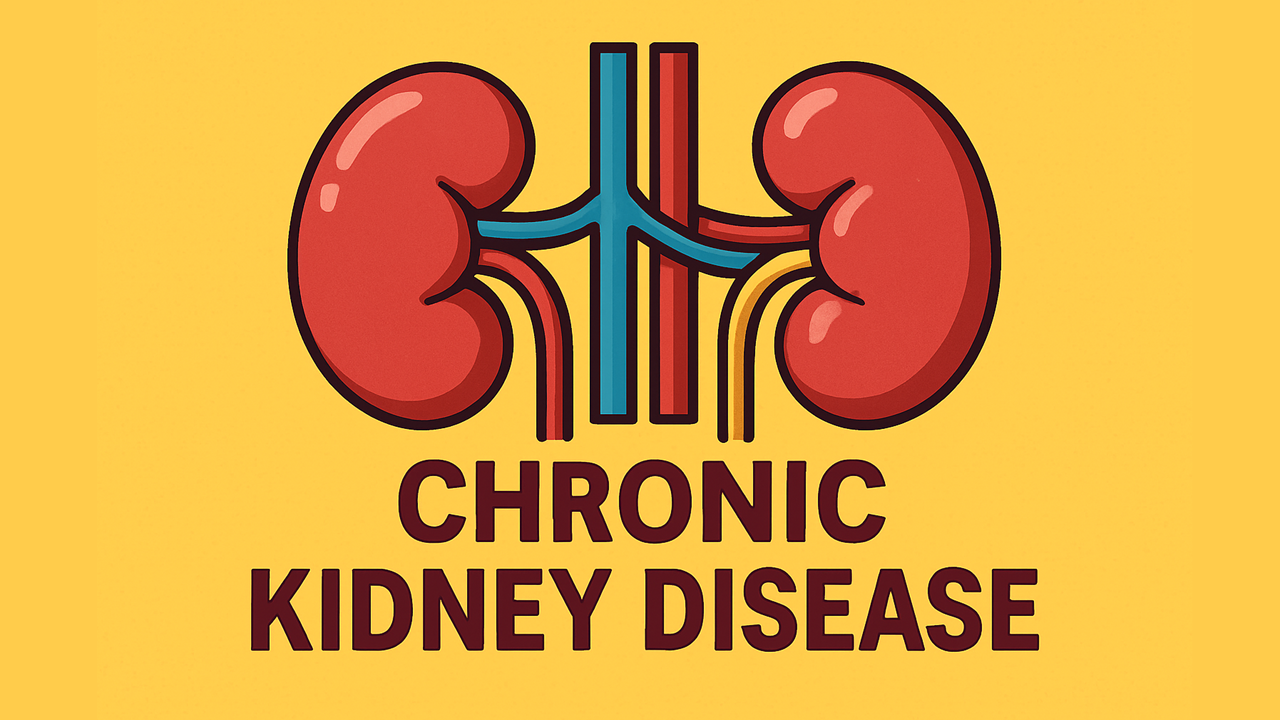What is Alzheimer’s Disease?
Introduction to Alzheimer’s Disease
Alzheimer’s disease (AD) is a progressive neurodegenerative disorder and the most common cause of dementia in older adults, accounting for 60–80% of dementia cases [1]. Over 55 million people worldwide are living with dementia [10], and this number is projected to roughly triple by 2050 as populations age [10]. In the United States alone, an estimated 7.2 million people aged 65 and older will have Alzheimer’s dementia in 2025 [1]. Although advanced age is the biggest risk factor, genetics and lifestyle also contribute. Alzheimer’s ultimately proves fatal—complications impair essential bodily functions—and it ranks among the top causes of death in older adults [1].
Despite its prevalence, there is currently no cure for Alzheimer’s disease [1]. Existing treatments help manage or modestly slow the disease’s progression, while lifestyle modifications provide partial benefits. Recent research is exploring disease-modifying therapies that target amyloid plaques or tau tangles, offering new avenues for intervention [3,8]. Below is a comprehensive examination of Alzheimer’s, including the biology behind it, its stages, typical symptoms, diagnostic advances, current treatments, and highlights from ongoing clinical trials.
Underlying Biological Mechanisms
At the microscopic level, Alzheimer’s is characterized by two hallmark protein pathologies—beta-amyloid (Aβ) plaques and tau tangles [2]. Beta-amyloid fragments, derived from amyloid precursor protein, accumulate outside neurons to form amyloid plaques [2,8], triggering immune responses that damage cells [2,8]. The plaques can appear decades before symptomatic decline [2]. Tau, on the other hand, becomes hyperphosphorylated and forms neurofibrillary tangles inside neurons [2]. These tangles disrupt the cell’s internal scaffolding and correlate with neuronal dysfunction and death [2,8].
Researchers describe amyloid as the “trigger” and tau as the “bullet,” with amyloid buildup initiating a cascade that leads to tau pathology [2]. Chronic neuroinflammation also plays a central role, as persistent microglial activation releases inflammatory molecules that harm neurons [6]. In addition, the “cholinergic hypothesis” notes significant deficits in the neurotransmitter acetylcholine due to degeneration of cholinergic neurons [5], explaining many early memory symptoms.
Ultimately, Alzheimer’s leads to progressive synaptic and neuronal loss, with extensive atrophy observed in regions crucial to memory and cognition [8]. The cumulative effect of plaques, tangles, and inflammation produces the hallmark deterioration of cognitive and functional abilities over time [2,6].
Stages and Progression
Alzheimer’s disease typically progresses over many years in five broad stages [4]:
Preclinical Alzheimer’s (No Symptoms): Pathology (amyloid/tau) is present in the brain, yet cognition remains normal. This silent phase can last a decade or longer [4].
Mild Cognitive Impairment (MCI) due to AD: The person experiences measurable memory/thinking problems that exceed normal aging but retains most daily functioning [4]. Not all MCI is from Alzheimer’s, but when AD biomarkers are positive, risk of progression to dementia is high [4,8].
Mild (Early-Stage) Alzheimer’s Dementia: Cognitive deficits become obvious—memory lapses, trouble with finances, repeating questions, subtle personality changes. Independence is partly maintained [4].
Moderate (Mid-Stage) Alzheimer’s: Worsening confusion, more significant memory loss, language deficits, behavioral changes (e.g., agitation, irritability). Individuals need assistance with daily tasks [4].
Severe (Late-Stage) Alzheimer’s: Extensive brain atrophy leads to profound cognitive and physical decline. Individuals cannot perform basic self-care and become fully dependent [4].
While each stage follows a consistent pattern, the rate of change varies among individuals. Common to all is a progressive expansion of plaques, tangles, and inflammation that destroys synapses and erodes cognition [4].
Symptoms
Memory Loss and Repetition: Short-term memory deficits usually appear first, leading people to ask the same questions repeatedly or forget recent conversations [2]. Misplacing objects (e.g., keys) in illogical places is common.
Disorientation: Difficulty tracking time, place, or events often arises. Patients may get lost in familiar areas and struggle to recall how they arrived [5].
Difficulty with Tasks and Planning: Complex tasks, like managing finances or following recipes, grow challenging. Problem-solving and carrying out multistep activities deteriorate [5].
Language and Communication Issues: Finding words becomes harder, resulting in pauses or substituting incorrect words [5]. This affects speech, writing, and the ability to follow group conversations.
Behavioral and Mood Changes: Anxiety, agitation, depression, or suspicion can emerge [5]. Social withdrawal or apathy also develops as the disease progresses.
Poor Judgment: Individuals may make unsound decisions with money or daily affairs, reflecting a diminished ability to evaluate risks [2].
Altered Spatial Perception: Trouble reading, driving, or interpreting patterns arises from impaired visual-spatial processing [5]. Some may perceive floor patterns as obstacles or misjudge distances.
These symptoms escalate as more neuronal and synaptic networks fail under pathologic protein accumulations [2,6,8].
Diagnosis and Biomarkers
Doctors combine clinical assessments with emerging biomarkers for a more accurate Alzheimer’s diagnosis [3,8]:
Clinical Evaluation: Thorough history, mental status exams (e.g., MMSE, MoCA), and functional assessments are standard [3,4]. MCI vs. dementia severity is gauged through daily living tasks.
Brain Imaging: MRI shows brain atrophy (especially hippocampal shrinkage) [8]. PET scans can detect amyloid plaques or tau tangles [8], providing strong evidence of Alzheimer’s pathology.
Cerebrospinal Fluid (CSF) Analysis: Low Aβ42 and elevated tau in CSF strongly indicate AD [3]. This profile can be detected even before clinical dementia.
Blood Biomarkers: Measurements of phosphorylated tau in plasma correlate with Alzheimer’s pathology [11]. Though still in development, these tests promise accessible early detection.
Genetic Testing: While most AD is sporadic, certain genes (APOE ε4) can increase risk, and rare mutations (APP, PSEN1, PSEN2) cause early-onset familial AD [4]. Genetic status is not diagnostic by itself but may raise suspicion.
By integrating these data—clinical symptoms, imaging, and biomarker results—clinicians can diagnose AD with high confidence. Biomarkers are crucial for distinguishing AD from other dementias and identifying patients in presymptomatic phases [4,8,11].
Current Treatment Options
Although no therapy cures Alzheimer’s, several strategies help manage or slow the disease:
Medications for Cognitive Symptoms
Cholinesterase Inhibitors (Donepezil, Rivastigmine, Galantamine): These boost acetylcholine levels by inhibiting its breakdown [5]. Used in mild-to-moderate AD, they temporarily maintain memory and thinking abilities. Side effects include gastrointestinal disturbances.
Memantine: An NMDA receptor antagonist, often added in moderate-to-severe stages [5]. It helps regulate glutamate, offering a modest improvement in cognition and function. It can be combined with a cholinesterase inhibitor.
These drugs delay deterioration or mitigate symptoms slightly; they do not halt the disease [5].
Disease-Modifying Therapies (Anti-Amyloid Monoclonal Antibodies)
Aducanumab: Approved under accelerated approval in 2021 due to its plaque-clearing effects, though its clinical benefit remains controversial [3].
Lecanemab: Demonstrated a 27% slowing of decline in early AD [13]. Approved in 2023, it confirms amyloid removal can alter disease trajectory, albeit modestly.
Donanemab: Showed about 30% slowing for early symptomatic AD [12], pending regulatory approval.
All carry risks like ARIA (brain swelling/hemorrhages) and require regular infusions. They address amyloid pathology but yield only partial slowing, not a cure [3,12,13].
Managing Behavioral Symptoms
Low doses of antidepressants, anxiolytics, or antipsychotics address mood changes, agitation, or psychosis when non-drug measures prove insufficient [5]. Careful monitoring is key due to heightened side effects in dementia.
Lifestyle and Supportive Measures
Exercise, cognitive stimulation, and a balanced diet can support brain function [7]. Social engagement and routines reduce confusion and stress. Caregivers often need guidance, respite, and community resources for best outcomes.
Ongoing and Recent Clinical Trials
Research in Alzheimer’s is extraordinarily active:
Lecanemab (Clarity AD): Showed a 27% slower decline in mild AD, marking a major milestone in proving anti-amyloid therapy’s clinical benefit [13].
Donanemab (TRAILBLAZER-ALZ 2): Achieved ~30% slowing of progression in early-stage AD [12]. It underscores the importance of treating mild disease, where greater benefit can emerge.
Semorinemab (Lauriet): Anti-tau therapy that did not meet key endpoints in mild-to-moderate AD, highlighting challenges in tangibly improving outcomes via tau targeting alone [9].
Prevention Efforts: Trials like AHEAD are testing amyloid-lowering drugs in asymptomatic individuals with biomarker-positive brains [3]. Earlier intervention might yield bigger gains if done before neuronal damage accumulates.
Additionally, combination therapies (e.g., amyloid + tau + anti-inflammatory) and advanced biomarkers (plasma p-tau, new imaging tracers) are under investigation. Every trial—success or setback—refines our understanding of AD’s complexity and brings potential new strategies closer.
Looking Forward: A Multi-Faceted Alzheimer’s Approach
Alzheimer’s disease remains a formidable challenge, rooted in amyloid accumulation, tau pathology, chronic neuroinflammation, and progressive neuronal loss. From mild memory lapses to total dependency, AD’s course underscores the need for early identification and comprehensive care. Enhanced diagnostic methods—including PET scans, CSF, and blood biomarkers—are improving accuracy and supporting earlier intervention.
Symptomatic treatments (cholinesterase inhibitors, memantine) remain the backbone of clinical practice [5], offering modest relief. Newly approved anti-amyloid therapies (lecanemab, donanemab) are ushering in the first wave of disease-modifying options [12,13], though their benefits are moderate and come with risks. Lifestyle measures—regular exercise, cognitive engagement, social support—remain essential to quality of life [7], while caregiver education is crucial for humane management.
Ultimately, combating AD will likely require multiple synergistic strategies, tackling amyloid, tau, vascular factors, and inflammation. As research intensifies, the goal is to slow or prevent Alzheimer’s before it robs individuals of independence and identity. This multifaceted vision—uniting pharmacological breakthroughs, biomarker-driven diagnostics, and supportive interventions—offers hope that the relentless progression of Alzheimer’s disease can be curbed, if not halted, in the foreseeable future.
References (APA)
Alzheimer’s Association. (2025). 2025 Alzheimer’s disease facts and figures. Alzheimer’s & Dementia, 21(5), –. [1]
Bloom, G. S. (2014). Amyloid-β and tau: the trigger and bullet in Alzheimer disease pathogenesis. JAMA Neurology, 71(4), 505–508. https://doi.org/10.1001/jamaneurol.2013.5847 [2]
Buccellato, F. R., D’Anca, M., Tartaglia, G. M., Del Fabbro, M., Scarpini, E., & Galimberti, D. (2023). Treatment of Alzheimer’s disease: beyond symptomatic therapies. International Journal of Molecular Sciences, 24(18), 13900. https://doi.org/10.3390/ijms241813900 [3]
Cummings, J. (2012). Alzheimer’s disease diagnostic criteria: practical applications. Alzheimer’s Research & Therapy, 4(1), 35. https://doi.org/10.1186/alzrt138 [4]
de Oliveira, F. F. (2022). The viability of treatment conditioned to the pathophysiology of Alzheimer’s disease. In G. A. A. dos Santos (Ed.), Pharmacological Treatment of Alzheimer’s Disease (pp. 31–52). Springer. https://doi.org/10.1007/978-3-030-94383-7_3 [5]
Ebrahimi, R., Shahrokhi Nejad, S., Falah Tafti, M., Karimi, Z., Sadr, S. R., et al. (2025). Microglial activation as a hallmark of neuroinflammation in Alzheimer’s disease. Metabolic Brain Disease, 40(5), 207. https://doi.org/10.1007/s11011-025-01631-9 [6]
Liu, W., Zhang, J., Wang, Y., Li, J., Chang, J., & Jia, Q. (2022). Effect of physical exercise on cognitive function of Alzheimer’s disease patients: a systematic review and meta-analysis of randomized controlled trials. Frontiers in Psychiatry, 13, 927128. https://doi.org/10.3389/fpsyt.2022.927128 [7]
Masters, C. L., Bateman, R., Blennow, K., Rowe, C. C., Sperling, R. A., & Cummings, J. L. (2015). Alzheimer’s disease. Nature Reviews Disease Primers, 1, 15056. https://doi.org/10.1038/nrdp.2015.56 [8]
Monteiro, C., Toth, B., Brunstein, F., Bobbala, A., Datta, S., et al. (2023). Randomized phase II study of the safety and efficacy of semorinemab in participants with mild-to-moderate Alzheimer disease: Lauriet. Neurology, 101(14), e2160–e2172. https://doi.org/10.1212/WNL.0000000000207861 [9]
Nichols, E., Steinmetz, J. D., Vollset, S. E., Fukutaki, K., Chalek, J., et al. (2022). Estimation of the global prevalence of dementia in 2019 and forecasted prevalence in 2050: an analysis for the Global Burden of Disease Study 2019. The Lancet Public Health, 7(2), e105–e125. https://doi.org/10.1016/S2468-2667(21)00249-8 [10]
Palmqvist, S., Janelidze, S., Quiroz, Y. T., Zetterberg, H., Lopera, F., et al. (2020). Discriminative accuracy of plasma phospho-tau217 for Alzheimer disease vs other neurodegenerative disorders. JAMA, 324(8), 772–781. https://doi.org/10.1001/jama.2020.12134 [11]
Sims, J. R., Zimmer, J. A., Evans, C. D., Lu, M., Ardayfio, P., et al. (2023). Donanemab in early symptomatic Alzheimer disease: the TRAILBLAZER-ALZ 2 randomized clinical trial. JAMA, 330(6), 512–522. https://doi.org/10.1001/jama.2023.13239 [12]
van Dyck, C. H., Swanson, C. J., Aisen, P., Bateman, R. J., Chen, C., et al. (2023). Lecanemab in early Alzheimer’s disease. New England Journal of Medicine, 388(1), 9–21. https://doi.org/10.1056/NEJMoa2212948 [13]






























